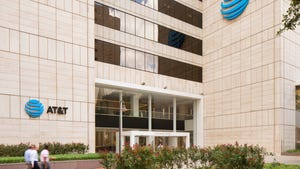April 30, 2024

The companies carried out the three-month trial across a standalone 5G test network in the small towns of Arcisate and Sernio in Italy's Lombardy region. They hooked up Open RAN masts in the two locations and connected them to Vodafone's test centre in Milan.
For the most part, the trial seems to have gone well, with Vodafone and Nokia claiming to have achieved results that are comparable with standard 5G RAN technology. This included reaching data download speeds of 1.1 Gbps and uplink of 160 Mbps.
That's essentially what the parties were shooting for when they announced plans to carry out the trial in October last year. Vodafone specifically said that its goal was "to prove that Nokia's Open RAN solution achieves functionality and performance parity compared to its purpose-built RAN." It pretty much repeated those same words in today's announcement. But while it is clearly claiming to have achieved its aim, the lack of specifics in certain areas raises question marks.
"Engineers from Vodafone and Nokia also achieved encouraging results in other areas, including latency (response times)," the announcement reads.
Encouraging, eh? Surely if latency had been up there with standard RAN-based 5G then the companies would have been shouting about it. It may seem a little nit-picky to pull apart the content of the firms' announcement like this, but given how carefully these types of releases are put together, choice of wording is usually relevant.
And the statement provided by Santiago Tenorio, Director of Network Architecture at Vodafone, tells us what we already know about the benefits of Open RAN, but nothing whatsoever about the Italy trial.
"Vodafone is dedicated to supporting the development and adoption of Open RAN worldwide by fostering a diverse ecosystem of partners and solutions. This approach offers numerous benefits, including increased choice, enhanced energy efficiency, higher network capacity, and improved performance for customers," he said.
Meanwhile, input from Nokia also tells us something we already knew: that despite its promises of openness, the Open RAN ecosystem is still mainly the preserve of well-established equipment makers.
"Nokia's collaborative anyRAN approach means that telecommunications providers can deploy Open RAN with the server hardware and CaaS layer of their choice," said Mark Atkinson, Head of RAN at Nokia. "Together with our ecosystem partners, we are committed to providing our customers with more choice and a higher performance in Open RAN solutions than they will see from other RAN suppliers."
The trial was based on Nokia's AirScale Massive MIMO radios – which are suited to connecting large numbers of users in busy urban environments, it noted – and the first deployment of Nokia's RAN software running on commercial-off-the-shelf (COTS) hardware servers from Dell using Red Hat's cloud infrastructure. These names are becoming highly common in Open RAN announcements.
Having picked holes in the announcement, it's worth pointing out that this is doubtless a step forward in terms of Open RAN development. Vodafone is putting more effort into rolling out the technology than most, having built out a number of sites in the UK and Romania, and shared a goal to have 30% of its masts based on Open RAN by 2030.
The trouble is, the steps don't seem to be coming as quickly as we might have expected.
About the Author
You May Also Like












_1.jpg?width=300&auto=webp&quality=80&disable=upscale)
